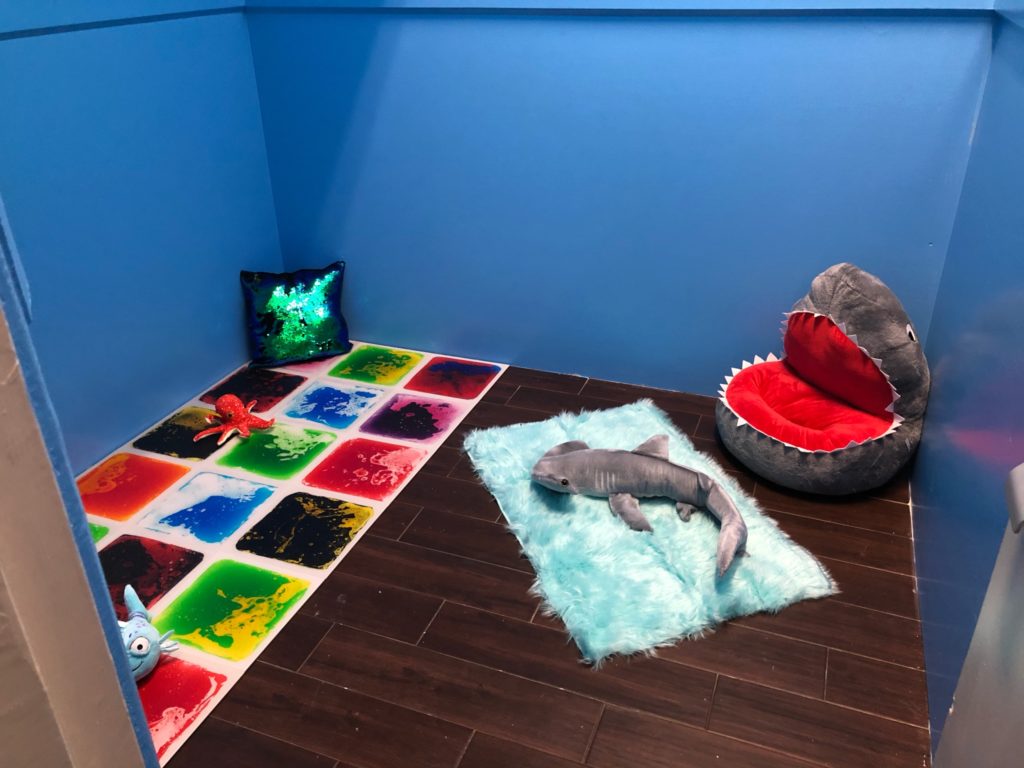A Calming Room is a space that is meant to be a supportive therapeutic environment which assists children in self-calming efforts by offering them a designated space to relax and self-regulate. It is a designated place designed to calm the senses where the student can experience calming visual, auditory, and tactile stimuli.
Items that should be included in your Calming Room
When creating a calming room you should attempt to include some if not all of the following:
- A variety of comfortable furnishings
- Tactile fabrics or surfaces
- Active seating that students can rock or sway on
- Low lighting (avoid harsh overhead lighting)
- Things to fidget with and distract an anxious mind, such as fidget toys, stress balls, puzzles, coloring pages, play dough, or calming jars
- Whiteboard tables, mobile whiteboards, personal lapboards, or other writable surfaces for drawing or doodling
- Noise-canceling headphones
- Quiet ways to expel energy
- Soft, calming colors
Who would benefit from a Calming Room
Some of the benefits of creating a Calming Room are that it creates a safe space, facilitates a therapeutic alliance, increases the ability to self-nurture, increases resilience, increases self-esteem and body image, and increases one’s ability to engage in social activities.
While a Calming room would be beneficial for all children and even many adults, they are very supportive in helping to manage the emotions and behaviors of children with sensory processing disorders, issues with anger management, children who struggle with self-regulation/mood regulation and who struggle with many other deficits. Calming rooms are especially helpful in classroom settings or an environment in which there are groups of children. It offers a space for children to be able to block out distractions, self-regulate and process through situations or events.
Things to consider when creating a Calming Room
When designing a Calming room, you should take into consideration the child/children that will be utilizing the space. Some factors to consider are:
- The developmental age and functional level of the children/ children it is intended for
- The interest of the child/children that will be utilizing the pace
- Safety factors (avoid items that will create risk)
- Ease of supervision (find a space that will allow for easy supervision)
- Ensure that it is visually appealing to the user

Resources
There are many resources available to assist you with creating a Calming Space that will be the most beneficial for you and needs of your child/children. Some helpful resources are:
How to Create a Calm Down Corner in 5 Easy Steps (The Art of Education University)
Written by Kevin Whitlock






